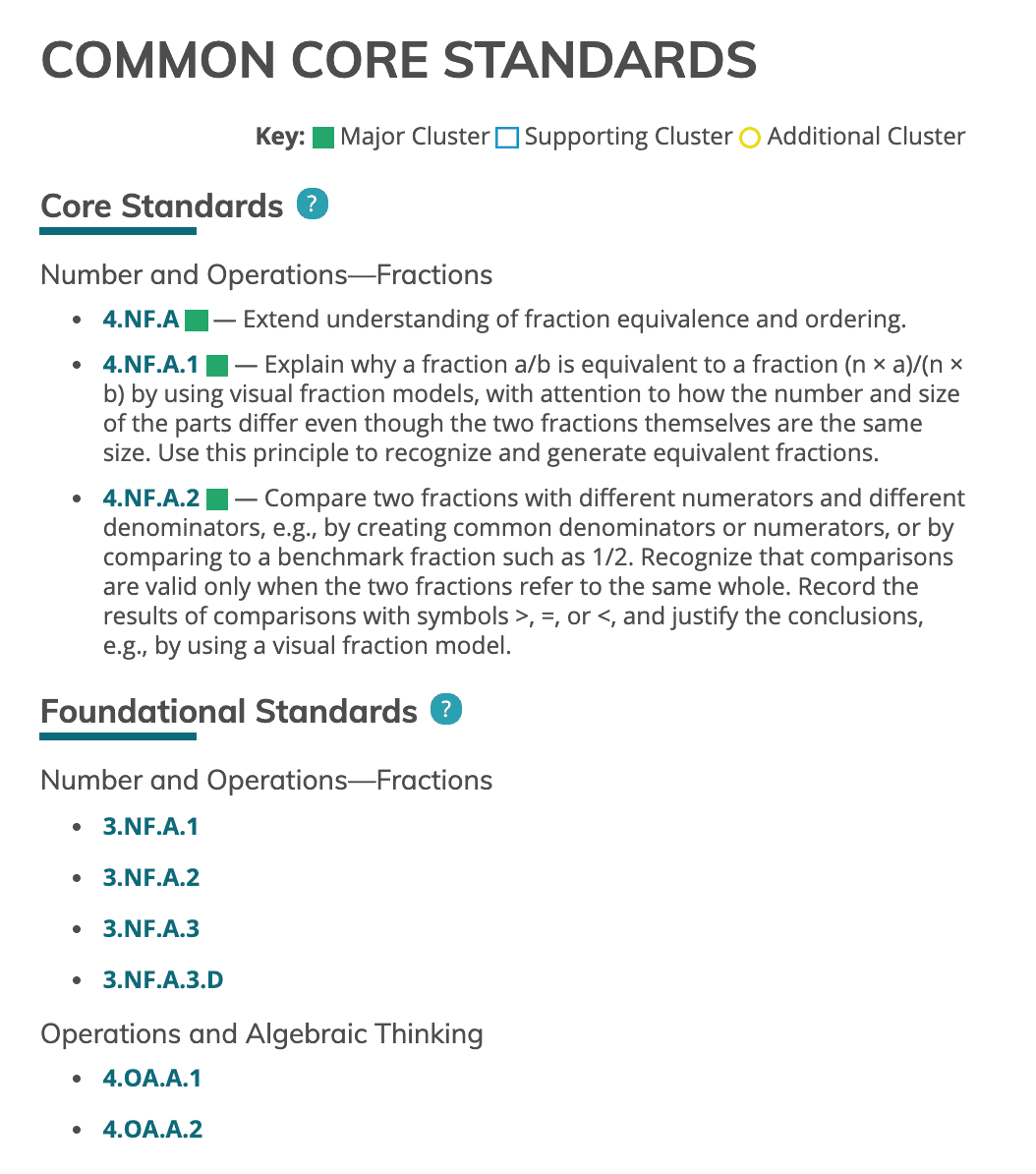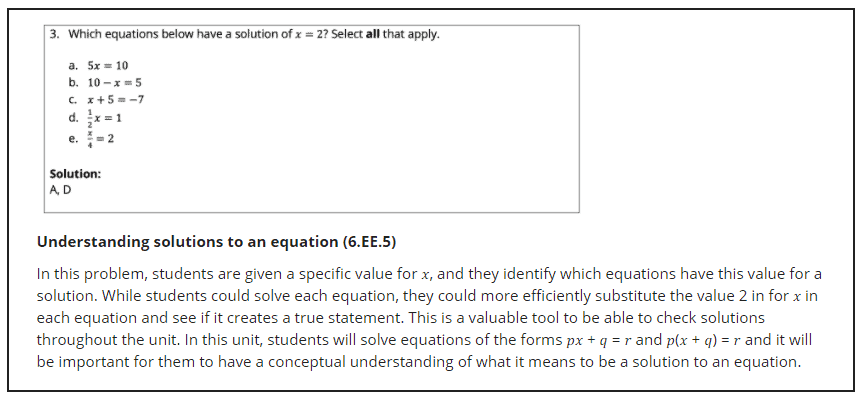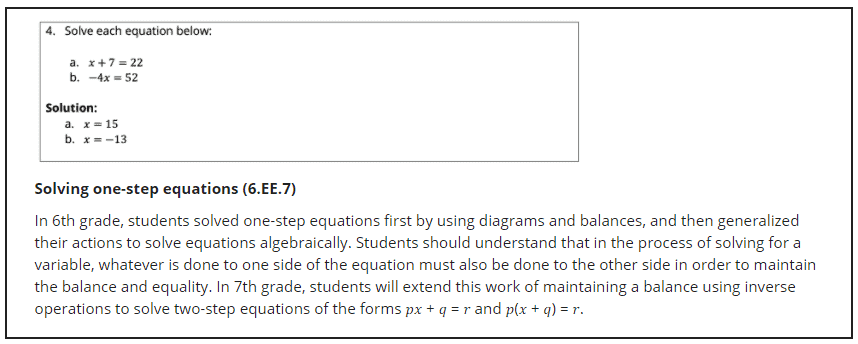This article was originally published on the Match Fishtank blog and was reprinted here with permission. The original post can be accessed here. Match Fishtank is a free, standards-aligned curriculum developed and curated by educators. Highly rated on EdReports, the full math and ELA curricula can be viewed, shared, and downloaded free of charge.
Given the major school disruptions we experienced in the spring, students’ preparedness to jump into grade-level math work is likely to vary widely this fall.
While it may seem right to try to address all of the content that students missed in the spring, the priority should be spending as much instructional time as possible focusing on rigorous, grade-level work, and incorporating review and re-teaching as necessary.
We know that the question of how to address unfinished learning is one of dozens of considerations teachers are grappling with in planning for the fall, exacerbated of course by uncertainties about in-person, online, or hybrid instructional modes.
We want to help teachers plan for math remediation in a way that focuses on grade-level content and makes the most of their prep and teaching time, while remaining as flexible as possible given all the other unknowns of the coming months.
Just-in-Time Instead of Just-in-Case
The inclination in your planning may be to think about the progression of the previous grade and which of the topics weren’t covered adequately when students were suddenly trying to learn outside of the normal classroom at an unprecedented time in history. One way to start the year would be to try to cover, in an expedited fashion, the units that students missed at the end of last year, before moving on to any grade-level content.
We would call this a kind of “just-in-case” review. Remediating for remediation’s sake in this way is going to start the semester with an unnecessary deficit mindset, frustrate kids right off the bat by focusing on what they maybe didn’t learn last year, and eat up time in a year when time is going to be at a real premium.
Of course in order for students to be able to access grade-level content, they are going to need to have the foundational skills in place. And especially after the range of experiences they had last year, we know there will be concepts that need attention before moving on to grade-level instruction.
So perhaps a diagnostic test at the beginning of the year could help shape your review in a more data-driven way?
Maybe, but there are a few things to consider:
- You might be overwhelmed by how much your students don’t know or recall, especially as they are coming back from many months away from school.
- You might think that there’s so much content you need to re-teach that it’s best to just go with the full-scale “just-in-case” review from above.
- Students’ understanding can change throughout the year, so if you give a diagnostic in September that includes content you won’t teach until April, remediating for it in the early months of the school year might not be the best time to help it stick for your students.
This last point is one of the best arguments for “just-in-time” review.
A just-in-time approach focuses forward on the current grade-level content, rather than backward on the skills missing from the prior grade. It gives your students the chance to feel some learning momentum, as they continue to acquire new skills and understanding.
To take an example from the Fishtank curriculum, 3rd Grade Unit 6 focuses on fractions. This is very important content that, given its place in the 3rd grade sequence, was very likely missed or taught remotely. Those foundational fraction skills will be needed in 4th grade, and will likely need some review to feel solid before launching into new content…but not until Unit 5.
And just-in-time planning considers content unit by unit, to help you determine your students’ review needs at the time when it’s going to be most helpful.
If you delay starting any 4th grade content to re-teach fractions, you might find yourself needing to re-teach again several months later, or perhaps running out of time before even getting to this grade-level content. A just-in-time review would assess student’s knowledge of the foundational standards that are important for understanding of 4th Grade Unit 5 just before the unit begins, and plan for remediation accordingly.
Just-in-time review asks three questions that guide the way we plan for and teach each new unit: what, how, and when.
What to Review
When we look at a unit, what to review should be rooted in the standards of the unit. We determine foundational standards of each unit and list them in the Standards section of the unit page.
To form this list, we rely in part on Student Achievement Partners’ Coherence Map, a dynamic visualization of how the Common Core Standards relate and build upon each other from grade to grade. We then identify the skills and concepts embedded in these foundational standards, along with any other soft skills or conceptual underpinnings that students will need coming into the unit.
Now it’s time to gather data on which students know what. For this, we’ve developed pre-unit assessments, offered as part of the Fishtank Plus package, and crafted to include questions to diagnose foundational understandings before the unit begins.
Looking again at a Fishtank example, 6th Grade Unit 6 covers equations and inequalities. Given the timing of this unit, it is likely it was impacted by school closures in the spring. Since this unit covers major work of 6th grade that is part of the progression towards middle school algebra, it may be tempting to want to go back and teach or re-teach this content right away.
Looking at the full 7th grade course, however, you’ll see that Unit 4 is where equations and inequalities come in. This is the best place to diagnose and address gaps from 6th Grade Unit 6.
Our 7th grade pre-unit assessment for Unit 4 contains several problems that reach back and look at 6th Grade Unit 6 content. For example, this problem assesses students’ conceptual understanding of the meaning of a solution to an equation.
And this problem assesses students’ procedural skills in solving one-step equations before they encounter two-step equations in 7th grade.
You’ll see that the pre-unit assessment answer guide identifies the standard being targeted by the questions (6.EE.7), and provides context for how the skills required relate to the content of the unit ahead.
Our pre-unit assessments are short, designed not to take away from precious instructional time. If your class is a hybrid of synchronous and asynchronous, we would suggest assigning these for students to complete independently. Alternatively, the questions could be split up and incorporated into a problem set or warm up in advance of the new unit, as long as you are cognizant of gathering the results back together to analyze.
How and When to Review
With this student data in hand, you’ll now be able to make informed decisions about incorporating review into the unit.
Some concepts will need class-wide review, and some may only need reinforcement with a select group. If you know what standard was being assessed in the diagnostic phase, you can reach back into prior grade levels of Fishtank curriculum (often easiest to search by standard) to find lessons or practice material that addresses the standard.
You might decide to provide the material as a do-now if the students need more teacher-led facilitation around skills that they don’t have, or you might plug it into a problem set if you think they mostly have it but they just need a little extra independent practice.
As far as when goes, if you know that a skill or content area is a prerequisite for a specific topic within the unit, then remediation should happen just prior to starting that topic.
We have a few resources that provide some of these answers for you:
- In the pre-unit assessment answer guide, we offer a potential course of action for review, depending on how students do on each question. For the solving equations example above, the suggestions are:

- Our free 2020–21 Scope and Sequence Adjustment Guides contain suggestions at the unit and topic level about when and what review could be incorporated, given the unique conditions of this and last school year.
- Some Anchor Problems, or even whole lessons, build in review of prior-grade-level work, and are indicated as such. The first anchor problem in 7th Grade Unit 4 Lesson 8 is a good example. Once you have identified the topics that need re-teaching, it is worth your time to check whether any of the Anchor Problems or lessons in the unit incorporate this review for you.
This year you may find that rather than just adding a bit of review time to an existing lesson day, you need to insert a whole day or two into your sequence to cover prior-grade-level concepts. Our Scope and Sequence Adjustment Guides give suggestions of lessons that can be combined or eliminated to make time for these more extensive review days, without sacrificing student understanding of the highest priority grade-level content.
We hope that this approach to “just-in-time” review will make the challenge of addressing learning gaps this school year feel a bit more manageable. We invite you to learn more about our pre-unit assessments and the rest of the enriching and time-saving features offered with a Fishtank Plus subscription.




















